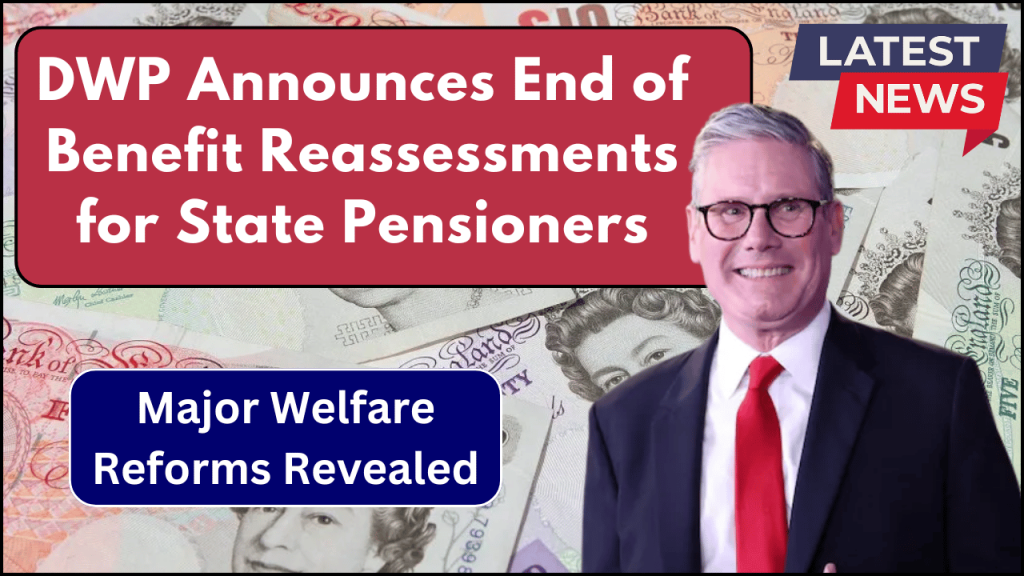
In a landmark announcement, the UK government has confirmed a major overhaul of its welfare system — marking the most significant reforms in decades. Under the new plan, certain benefit claimants, including state pensioners and people with lifelong health conditions who are unable to work, will no longer face regular benefit reassessments.
This sweeping reform, led by Work and Pensions Secretary Liz Kendall, is part of a broader £1 billion plan designed to help more people with health conditions or disabilities find employment while ensuring sustainable welfare spending for the future.
Why Are These Changes Happening?
The government has cited several growing challenges within the current welfare system as the driving force behind these reforms.
An increasing number of people in the UK are unable to work due to long-term illness. Presently, nearly 2.8 million individuals are not part of the workforce because of health-related issues — one of the highest figures among developed nations.
Additionally, youth unemployment remains a concern, with around 1 in 8 young people in the UK neither in education, employment, nor training.
Another key concern is the rising cost of Personal Independence Payment (PIP), a benefit provided to those with long-term health issues or disabilities. Since the COVID-19 pandemic, the number of PIP claimants has doubled. If trends continue, the government expects working-age PIP claimants to rise from 2 million in 2021 to 4.3 million by 2026, resulting in an annual cost of £34.1 billion.
By 2030, overall health and disability benefits could reach a staggering £70 billion a year — over £1 billion each week. This figure rivals over one-third of the NHS budget and triples the country’s spending on policing.
DWP £200 Cost of Living Payment 2025, Financial Help for Struggling UK Households
UK £250 Cost of Living Payment Arriving in April 2025, How to Check if You Qualify
DWP £18,570 Tax-Free Income 2025, Understanding Your Financial Rights
What Are The Main Changes In The Welfare Reform?
Prime Minister Keir Starmer described the existing welfare system as “outdated” and said it fails to serve the people it intends to help, businesses needing workers, or the taxpayers funding it. The latest reforms aim to protect those genuinely unable to work while supporting others who could potentially return to employment.
Key Changes Include:
1. Ending Reassessments for Those Who Cannot Work
People with permanent, severe health conditions or disabilities, especially state pensioners, will no longer need to undergo regular benefit reassessments. This move is designed to reduce stress and paperwork for the most vulnerable citizens.
2. Scrapping the Work Capability Assessment
The controversial Work Capability Assessment, which categorised people as either “fit to work” or “unfit to work,” will be replaced with a more supportive approach.
3. Introduction of a £1 Billion Employment Support Package
A significant investment will offer personalised help for those with disabilities or health issues, making it easier for them to find appropriate work.
4. New “Right to Try” Guarantee
This policy ensures that people who want to attempt working will not risk immediately losing their benefits if things don’t work out.
Other Important Reforms
Changes to PIP Eligibility Rules
To ensure the sustainability of welfare spending, new rules will require claimants to score at least 4 points on one daily living activity to qualify for the daily living component of PIP. This change could affect those with lower support needs.
Universal Credit (UC) Changes
The Standard Allowance in Universal Credit will increase above inflation, providing claimants with an additional £775 per year by 2029/30.
Youth Benefit Adjustments
The government is considering delaying access to the health-related component of Universal Credit until age 22, aiming to encourage younger people to stay in education or training.
The Five Core Principles of the Reform
Liz Kendall outlined five key goals that underpin the reforms:
- Protect those who cannot work — ensuring long-term support and dignity.
- Provide better, personalised employment support for those who can work.
- Prevent long-term unemployment through early interventions.
- Restore public trust by improving assessments and focusing on abilities rather than disabilities.
- Keep the welfare system financially sustainable for future generations.
Expected Outcomes and Financial Impact
The reforms are expected to deliver savings of over £5 billion by 2029-30. Detailed financial breakdowns of these changes will be made available in the government’s Spring Statement on March 26.
Implementation Timeline
The new reforms will require primary legislation, which the government plans to introduce during the current session of Parliament. If approved, changes like the new PIP eligibility rules and Universal Credit adjustments will come into effect from 2026/27.
Separate legislation will be introduced for policies such as the “Right to Try” guarantee.
In Scotland and Wales, where some welfare powers are devolved, the UK government will work closely with local administrations to ensure consistency.
What Does This Mean for Benefit Claimants?
- If you have a lifelong or severe health condition preventing you from working, reassessments will end permanently for you.
- Universal Credit claimants will see their standard allowance rise significantly over the next few years.
- People with lower PIP needs may need to meet new eligibility criteria.
- Young people under 22 may face changes in how they access health-related Universal Credit support.
- Anyone willing to try working will have extra protections in place to avoid losing their benefits immediately.
In Summary
These latest welfare reforms mark a bold shift in the UK’s approach to supporting disabled and vulnerable individuals. While protecting those who genuinely cannot work, the government aims to encourage more people back into employment with personalised support — all while ensuring the welfare system remains financially viable for years to come.
As these changes take shape, benefit claimants are advised to stay updated through official government channels to understand how these reforms may affect their specific circumstances.